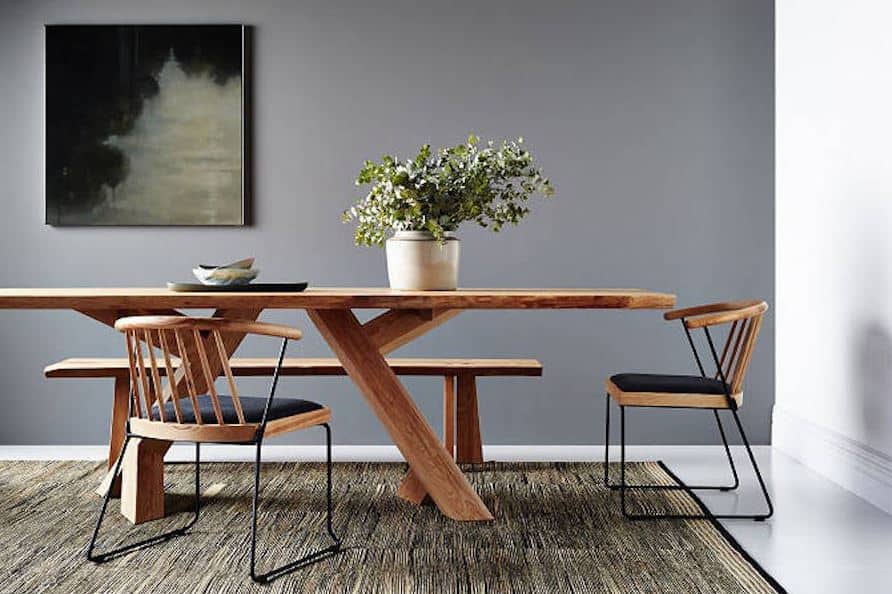
Minimalism is becoming a rapidly growing favourite in many homes across the UK and beyond.
Whether that's down to the easy implementation or because it’s a generally inexpensive way of getting a particular look in your home.
With styles like Japandi cropping up, it can further propel the style into many more homes; since it takes on an alternative design that traditional minimalist styles do not.
Table of Contents
The Japandi style is made up of two similar but very culturally different styles; with their own philosophies.
To no surprise, one of these styles has a Japanese origin; the wabi-sabi look.
Which is a style that promotes perfectly imperfect, promoting the concept in which designs do not have to be symmetrical or even fitting to a space to be beautiful.
Combining this with the simplistic Scandivnidan minimalist look, which features more traditional whites and accent colours which you will find across many minimalist interiors…
You end up with a style like Japandi; a combination of two very different ideas that come together to create something beautiful and certainly alternative to the minimalism niche.
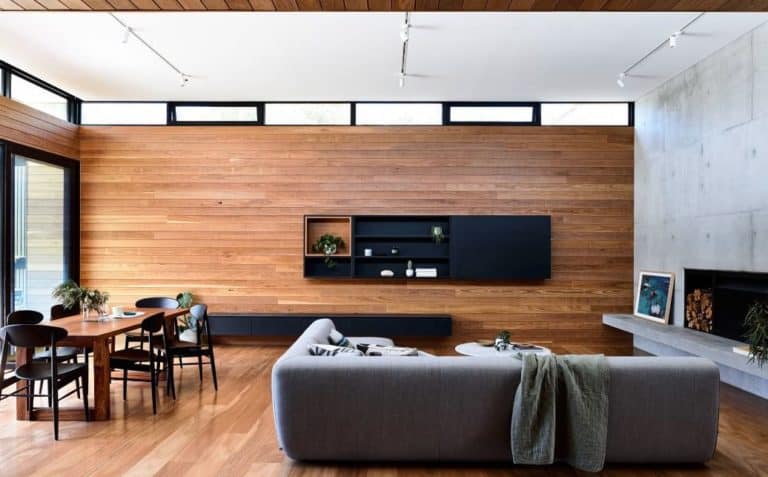
To know more about Japandi, it is important to talk about the two individual styles which make up the Japandi style.
Doing this will let you in on two other styles you may also have been unaware of - which you may be more interested in for your own home.
You’ll also be able to get an idea of just how similar these concepts are despite the fact they come from two very different cultures - and exactly why they work so well together.
The Japanese philosophy we were referencing a little early is the ‘Wabi Sabi’.
Wabi Sabi is the acceptance of transience and imperfection in all aspects of life. Not limiting these beliefs to solely the interior of our home but to the choices and actions, we take in life.
Here are some design characteristics you would need to express if you were looking to add the wabi sabi architecture style to your home;
In the context of interior design and decor, to get the wabi sabi design in your home, you would need to embrace authenticity, promoting an overwhelming sense of peace and tranquillity in every room through the use of things such as simplicity and natural items; as we’ve just listed.
This is obviously the opposite what many of us do in our homes and general lives which is to add the latest shiny new object to our ornament collection - obsessing over this helps keep our interior up to date and perfectly detailed.
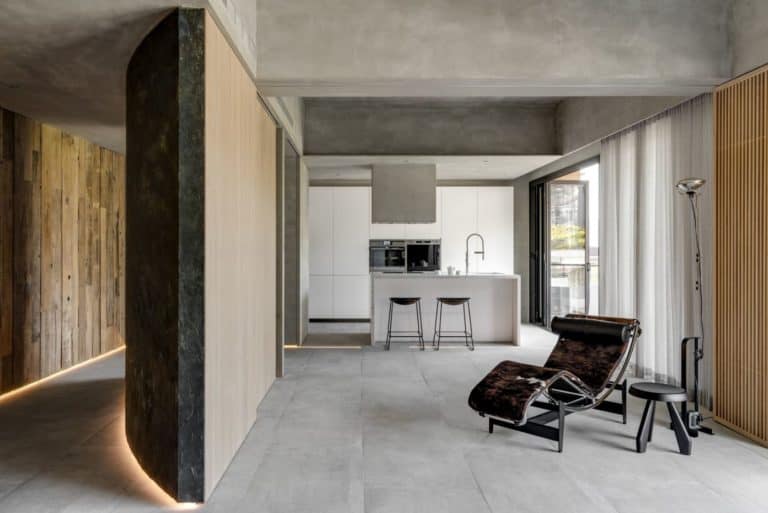
Since this is a take on the minimalistic style, you’re going to want to clear out the clutter in your home. Whether that's ornaments that don’t quite fit or furniture that has no real place beyond making your home look busier.
A wabi-sabi home should be clutter-free and organized in a way that gives each Japanese decor piece a place and a purpose but not necessarily organised to the point where ornaments and extra furniture pieces are perfectly symmetrical and parallel to each other.
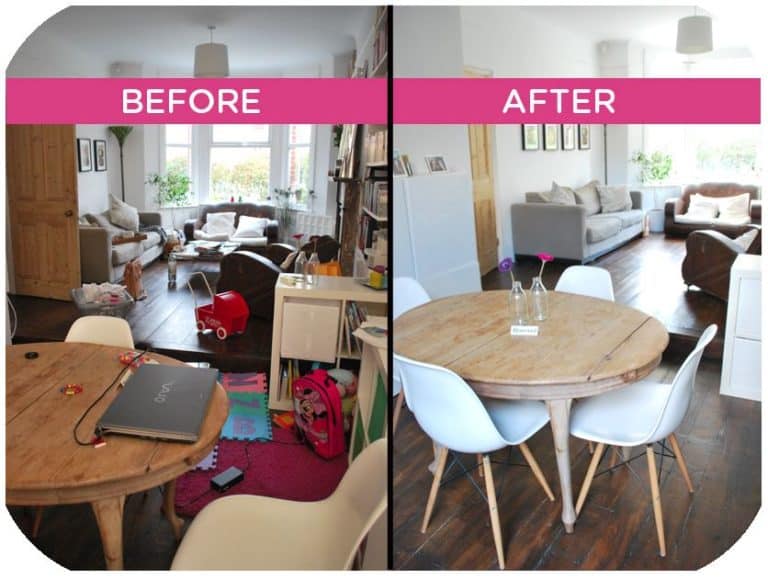
Since the style is ultimately embracing authenticity whenever possible, you’re going to want to replace and add as many of these stylised Japanese home design pieces as you can.
For that, there's no better choice than handmade natural furniture if you’re looking to achieve the Japanese interior design look convincingly.
Taking inspiration from rustic-modern interiors, you’re going to be able to add a bit of your own personality to a very minimal interior - depending on the type of natural furniture and decor you introduce, like a custom Japanese living room furniture or Japanese bedroom furniture.

If you look beyond the fact that natural pieces work so well with your authentic furniture - wabi-sabi initial inception is based on working and living with nature, referencing that nature itself is imperfect but also beautiful.
In this case, it would then make sense to add natural Japanese home decor pieces like flowers and plants to the home to help enforce this ‘rule’ and help get you this style of Japanese decoration.
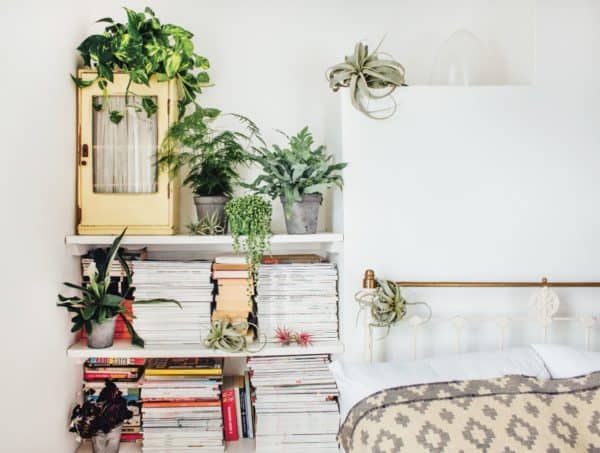
Scandainvation furniture, although unlike wabi-sabi does not have such an interesting origin, is just as beautiful when you take it for what it is - a minimalist style that involves clean and simple lines but at no sacrifice of beauty.
Which in some cases seems to be a recurring theme with similar minimalist designs.
Just like we did with its Japanese counterpart, here are some common characteristics of this style;
Introduced around the 1950s, Scandinavian design has had a tight hold on the modern look of homes across America and Europe ever since.
Embracing modern furniture and the cool colours that come with it, it is possible to transform any style of interior with Scandinavian furniture, whether you’re adding a scandi bedside table to your minimalist bedroom or a Scandinavian dining table to a modern focused area.
This style is also ideal for anyone looking to add ceramic, wall & floor tiles since such decoration adds the cool and modern style we are going for.
Everything in the home needs to have its own place, not necessarily fixed to the point where everything is symmetrical but so that you are not over cluttering the area which you live in.
Which goes against the number 1 rule of minimalistic design; having an unorganised interior.
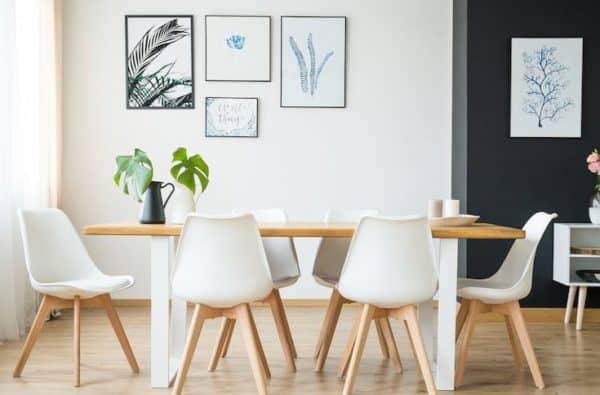
Whether you’re adding a scandi sofa or a Scandinavian sideboard, it is important to ensure that everything has a place and a purpose.
Accessorizing your home is one of the most enjoyable parts of the design process and it can be an easy way for you to improve your interior design. It's also finally the part where you get to personalize the style - putting your own twist onto it.
This is all fine and well but you need to make sure anything you add makes sense being there - decoratively.
For example; a Scandinavian bedside table would make sense to have for functionality in the bedroom but does something like Scandinavian art make sense to have, or are you just overwhelming the interior?
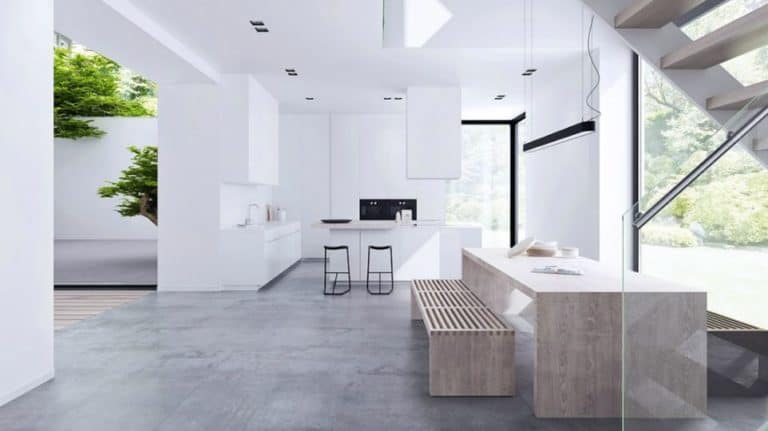
It will come as no surprise that this minimalist style contains plenty of neutral colours like bright whites, black and tan shades.
Although don’t be fooled, there are still accent colours that people use to add a bit more personality, a space we spend all of our time in can’t be completely void of colour.
Shades like dark blues, greys and even yellows are amongst favourites - although we do recommend leaving out yellow to those who want more of an appealing look as it isn't for everybody and it can take away from the intended simplistic design we are going for.
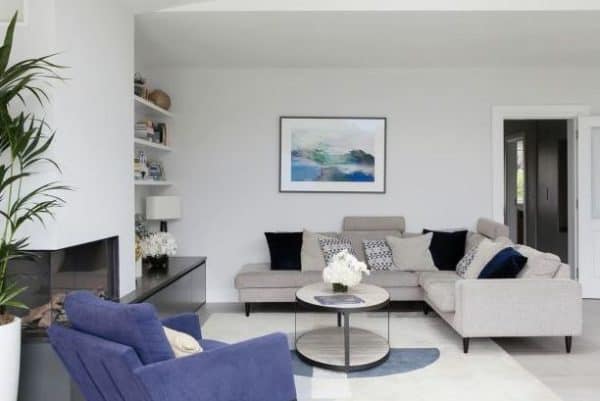
Scandivnaians deeply value the outdoors, spending time outside and taking influence from their natural surroundings. Because of this, it would make sense to reflect this in the style of the interior.
This can be done by adding naturally finished pieces, like wood and tan colours as well as actual outdoor life such as plants and flowers.
If you’ve read up until this point, you will probably be able to gather the similarities to both styles and now may understand why they’re used together as the Japandi style.
Let me summarise what they have in common;
The only thing they really differ in is the way in which the interior would look in the end. Wabi-sabi emphasises heavily on the ‘nothing is perfect’ ideology whereas Scandinavian design does not.
Although this does not mean it is not possible to have an imperfect design it just means that it isn't forced as one of the rules of Scandinavian design.
With this summarised, it should now be clear as to why these two styles have been combined - they essentially feature similar designs that can be used throughout the home.
This, however, does not mean that Japandi isn't its own style in its own right.
There are a few different things that Japandi does that these two styles do not necessarily do on their own.
It is also important to note; Japandi is inspired from these two styles, it is not simply a copy.
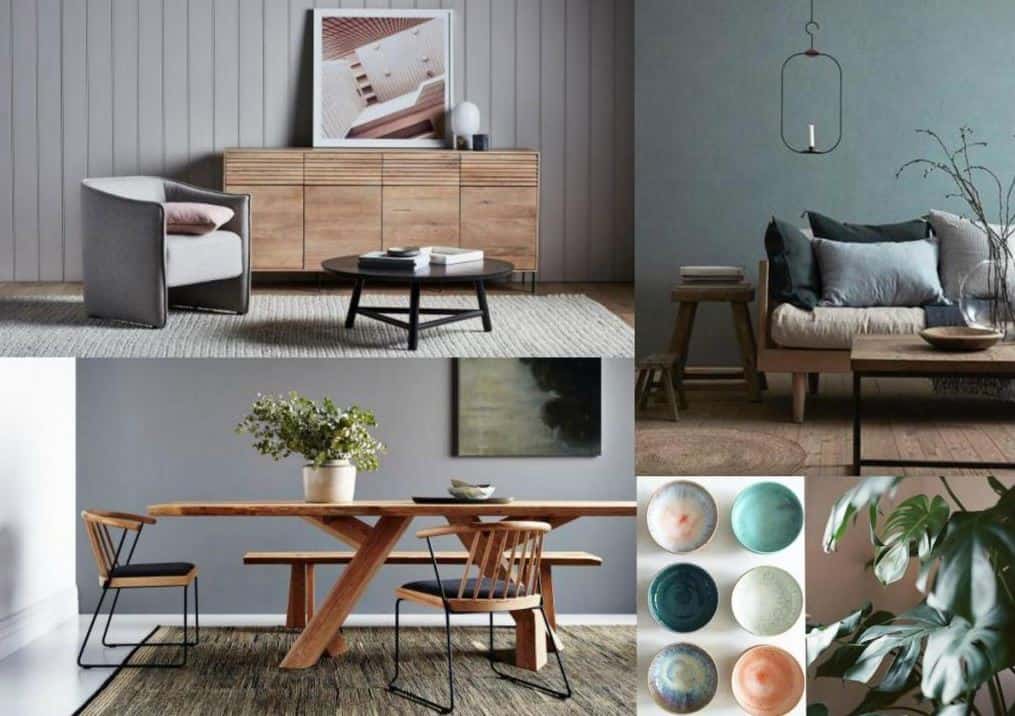
Finally, now that you understand the origins of this wonderful style of interior, we can now get into what this style actually is and why it's kicking up so much fuss within the interior design industry and more specifically within the minimalist niche.
Also known as Japanodric, this style of design, as we’ve just spoken about, combines both the modern-rustic styles of Scandinavian furniture in conjunction with the sophisticated and imperfect designs that are all about using and manipulating basic fundamentals of geometry.
At its very core, Japandi is focused around simplicity which is both the focused element of Japanese and Scandi styles we are now more familiar with. Focusing on and encouraging imperfect designs all throughout the home, you can use this design to create a warm and comforting atmosphere.

With any minimalist trend, it can be hard to identify exactly what you need to do to get the style you desire. Especially with minimalist designs since you have the added trouble of making your home look like the style you want without overdoing it.
Here are some things you’re going to want to add the get the Japandi look.
Let’s get into some ways we think you can add these points of style in your very own home as well as some more in-depth knowledge as to why this helps give you the Japandi style.
Paying homage to both the Japanise and Scadanvians background, the Japandi style requires you to add natural aspects to your home.
You can do this by adding in houseplants in some form of an elegant vase or simple white pottery - depending on the design of your home and the other ornaments you may have.
To add Nature into the home, you don’t necessarily need it directly in your living room. It is also a good idea to have furniture outside that features a rustic design which you can see from a featured window which will also give you this desired effect - although this won’t work alone, we would still recommend adding in greenery throughout the home where you can.
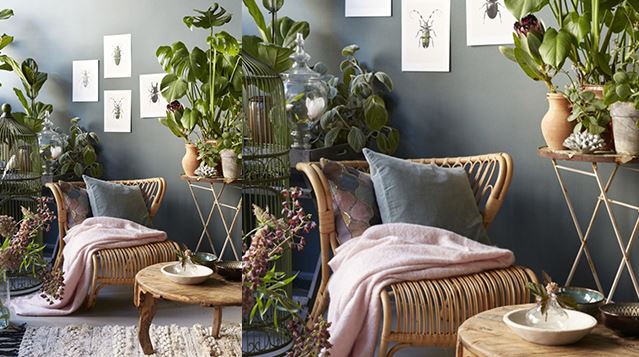
Mix both classic styles of wood furniture - Scandi typically features light tones whereas the Japanese feature more traditional dark woods. Combining the two gives you the opportunity to get a visually appealing interior - allowing you to embrace the Japandi style of mismatched furniture.
For example, you could have something like a Japanese style dining table which features a dark wood finish alongside more nordic furniture such as a set of dining room chairs which is made from the classic light wood that many of the Japanese style furniture is built from.
Another addition you could make, which will work perfectly with the more natural elements we’ve just discussed is natural woods in the forms of furniture like a Japanese sideboard or Scandinavia bedroom furniture.
Since Japandi is made up of two individual styles, it is important to work both of them into your home so that you can get the desired look.
Adding furniture from both designs can help you achieve this.
Especially if you take into account the accent colours which you would typically feature in a Scandinavian interior setting, you can create a Japandi style that is truly unique to you and your home.
Japandi typically features beige colours over whites, although you can still use these in conjunction with each other if you’re wanting a place that is a little brighter than a classic Japandi interior may typically be.
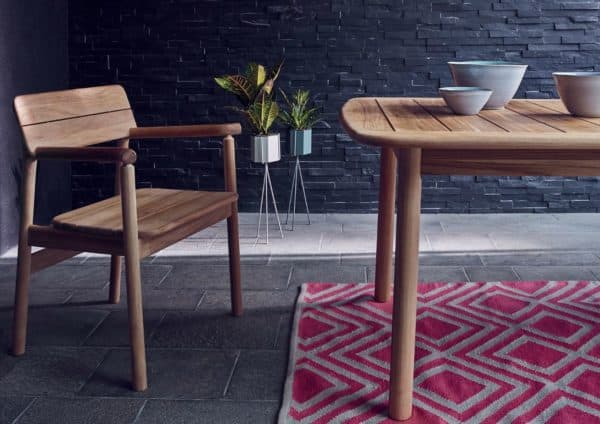
Minimalist style is about getting the perfect look.
With the perfect balance of functional furniture and accessories along with an ideal amount of whites and accent colours.
But this is where Japandi is different in this aspect.
You’re going to want to create a space embraces imperfections, one that does not force symmetric and is okay with mismatched furniture and aesthetical pieces that may not necessarily fit amongst other furniture.

Japandi combines two beautiful styles of interior design to create one even better minimalistic style that goes against many typical beliefs of minimalism.
If you like the clutterless idea of minimalism but have always wanted something a little less brand and full of vibrant design, Japandi is certainly something to look into.